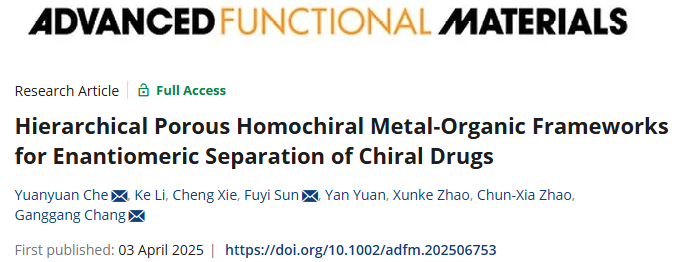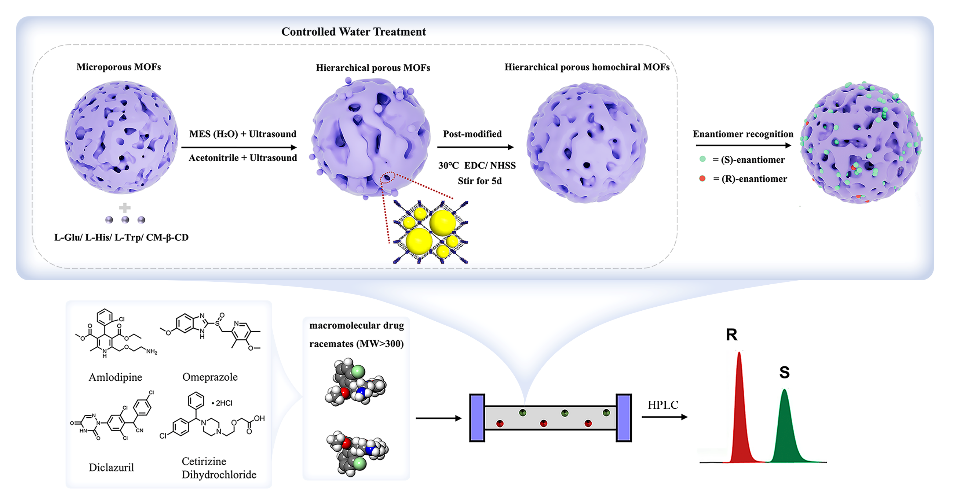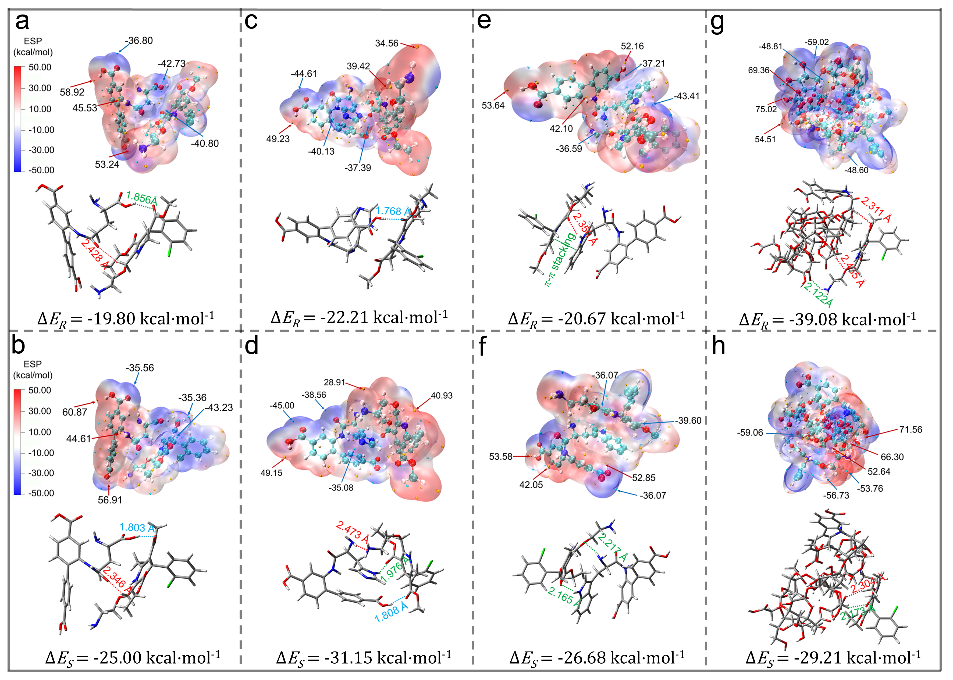The Latest Research Progress of Associate Professor Che Yuanyuan's Research Group Published in Advanced Functional Materials, a Top Journal in Materials Chemistry
Recently, the research group led by Associate Professor Che Yuanyuan from the School of Chemistry, Chemical Engineering and Life Sciences at Wuhan University of Technology (WUT) has achieved important advancements in the research on the application of hierarchical porous homochiral metal-organic frameworks (HPHMOFs) for chiral drug separation and host-guest separation mechanisms. Related research achievements titled HPHMOFs for Enantiomeric Separation of Chiral Drugs were published online in Advanced Functional Materials, a top journal in materials chemistry. The School of Chemistry, Chemical Engineering and Life Sciences of Wuhan University of Technology is the sole corresponding affiliation of the paper, with Yuanyuan Che as the first author and corresponding author, and Sun Fuyi, a graduate student, and Associate Professor Chang Ganggang as the co-corresponding authors.



Homochiral metal-organic frameworks (HMOFs) have been reported as versatile platforms for chiral separation in recent years. However, achieving effective separation of chiral drugs with high molecular weights and intricate stereochemical configurations remains exceptionally rare, despite the significant application value and technical challenges associated with separating such drugs. Conventional MOFs are often constrained by their microporous structures, which restrict the diffusion and chiral recognition of bulky drug molecules. This limitation has spurred the interest in hierarchically porous MOFs (HPMOFs) as a novel research direction to address these challenges. In this study, the research group innovatively employed a high-intensity ultrasound-assisted controllable aqueous treatment strategy to precisely modulate the hydrolysis process of DUT-5-NH2. Meanwhile, via post-synthetic modification techniques, both chiral amino acids and carboxymethyl-β-cyclodextrin (CM-β-CD) were grafted onto the frameworks, enabling the successful construction of enantioselective hierarchically porous homochiral metal-organic frameworks (HPHMOFs). These multifunctional materials exhibit exceptional structural stability and recyclability while integrating three distinct resolution modalities: adsorption-based selectivity, solid-phase extraction, and chromatographic column separation. The HPHMOFs demonstrated robust chiral recognition capabilities for multiple drug enantiomers, underscoring their versatility and efficiency in addressing complex separation demands. Molecular dynamics simulations and quantum chemical calculations revealed that the chiral recognition process is governed by the synergistic host-guest interactions, including weak interactions like hydrogen bonding, van der Waals forces, steric effects, and the stereochemical selectivity imparted by grafted molecules. Notably, the spatial arrangement, bond multiplicity, and interaction strength of hydrogen bonds played a dominanct role in enantiomer separation performance. Theoretical calculations further clarified the molecular mechanism underlying the superior enantioselectivity of CM-β-CD-functionalized HMOFs exhibit the best enantioselective separation ability among the four types of HPHMOFs. It is particularly noteworthy that the differences in adsorption energy and interaction energy between HPHMOFs and drug enantiomers are in good agreement with their chiral separation abilities. This research successfully achieved the enantioselective separation of macromolecular chiral drugs (with a molecular weight exceeding 300 Da) by HPHMOFs for the first time, providing theoretical support and a methodological framework for expanding the application boundaries of chiral separation materials.
Related article links:https://advanced.onlinelibrary.wiley.com/doi/10.1002/adfm.202506753
